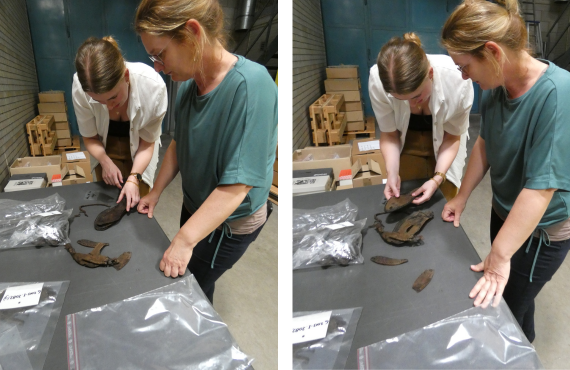
MUG Engineering Office is an independent nationally operating civil-engineering firm. It provides design, consultancy and engineering services within the disciplines of infrastructure, environment, archaeology, geo-ICT & data, geodesy and energy to governments and clients from the private and public sectors.
Since 1992, it has been legally required for both government agencies and companies and individuals to have archaeological research carried out during soil interventions. Because excavation research can only be carried out once, it is necessary that this is done by experts. MUG therefore employs its own archaeologists so that work and switching can be done quickly.

Archaeologists Martine and Sanne from MUG during the practical part of the course © Valuable th’Ing
MUG catalogues, cleans and preserves all objects found during soil research at its own location. Such objects can consist of all kinds of materials: stone, wood, ceramics and pottery, metals, human and animal remains and also leather. In order to be able to recognize and treat these materials adequately, the employees regularly follow additional and refresher courses with material specialists.
In this context, I was at MUG in Leek (Gr) on May 15, where I showered archaeologists Martine and Sanne during the morning session with theoretical knowledge about the tanning of leather in the past and present, the recognition of leather types and the identification of archaeological leather fragments and the basic principles of the conservation of archaeological leather.
In the afternoon we were guests at the Northern Archaeological Depot in Nuis where numerous leather objects and fragments were viewed and where the archaeologists themselves reassembled various fragments into a shoe. The day was concluded with the presentation of the certificates of participation.



Archaeological footwear in the Northern Archaeological Depot (NAD Nuis) © Valuable th’Ing
Would you also like to know more about how leather was and is manufactured, about leather and leather types, about (the history of) shoes and/or bags, about the sustainability of leather, about the do's & don'ts of conservation and maintenance? You can request information without obligation via the button below.